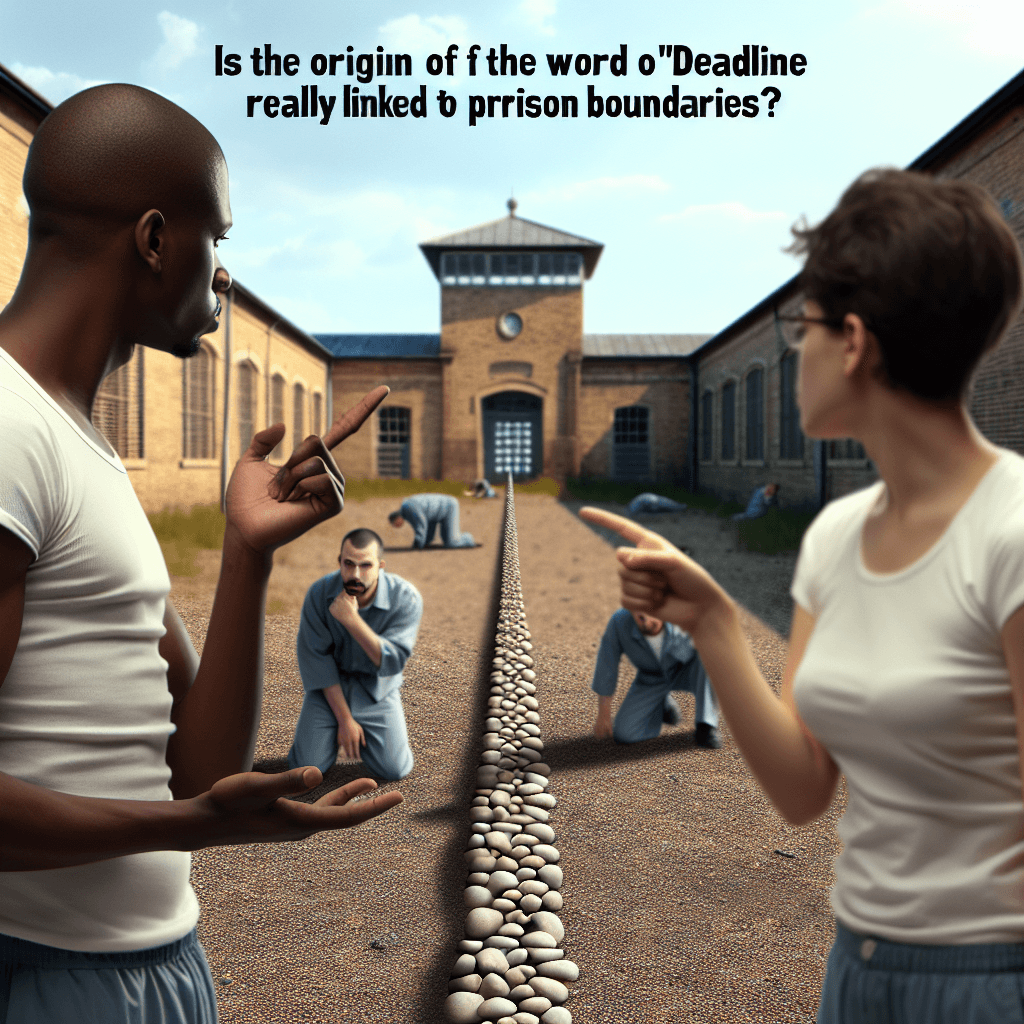The Grisly Truth Behind Your Next Deadline
We're told that deadlines create results, but we're never told what they destroy in the process.


Too Long; Didn't Read
TLDR: The term deadline originated from prison lines that inmates were shot for crossing. True to its roots, imposing deadlines kills creativity, increases stress, and encourages rushed, low-quality work, ultimately harming both the project and your well-being.
Crossing the Line: Is the Origin of 'Deadline' Really Linked to Prison Boundaries?
We hear the word 'deadline' constantly – in project management meetings, academic settings, and newsrooms. It conjures feelings of pressure, urgency, and the need to complete a task by a specific time. But have you ever wondered where this intense-sounding word comes from? A popular and rather grim story suggests its origins lie within the confines of Civil War prison camps, marking a literal line between life and death. Is this dramatic history true, or just a linguistic myth? This post delves into the etymology of 'deadline' to uncover its factual origins.
The Popular Story: A Line Not to Be Crossed
The most widely circulated origin story for 'deadline' points directly to the American Civil War (1861-1865). According to this narrative, notoriously overcrowded and under-resourced prisoner-of-war camps, such as Andersonville in Georgia, had physical lines established inside the prison walls, often marked by fences, stakes, or simple furrows in the ground. These lines, set some distance from the main stockade wall, formed a perimeter that prisoners were forbidden to cross. Guards were reportedly under orders to shoot any prisoner who touched or went beyond this boundary – the 'dead line'. This story paints a stark picture, linking the word directly to a fatal consequence.
Digging into the Evidence: The Civil War Connection
Is this chilling account accurate? In short, yes. Reputable etymological sources, including the Oxford English Dictionary and Merriam-Webster, confirm that the earliest recorded uses of the term 'deadline' indeed refer to these lines in Civil War prisons.
Historical records from the era corroborate this. Official reports and prisoner testimonies from the mid-1860s explicitly use the term 'dead line' to describe these boundaries. For instance, reports detailing conditions at Confederate prisons like Andersonville mention the establishment of such lines as a measure to prevent escapes and maintain control over the vast number of captives held within relatively insecure enclosures. Crossing this line meant summary execution, making it a 'deadline' in the most literal sense.
Why did such lines exist?
- Security: They provided a buffer zone, making it harder for prisoners to reach the outer walls or fences.
- Control: In severely overcrowded camps, they helped manage the movement of prisoners and allowed guards stationed on the walls to maintain order without entering the chaotic interior.
- Lethal Force Authorization: The line served as a clear demarcation; crossing it removed any ambiguity about a prisoner's intentions in the eyes of the guards, authorizing lethal force.
Beyond the Prison Walls: The Evolution of 'Deadline'
While the origin is rooted in this grim reality, the word 'deadline' didn't stay confined to prison descriptions. Like many words, its meaning evolved and broadened over time.
The next significant jump occurred in the early 20th century, specifically within the printing and newspaper industry. Around 1920, 'deadline' began appearing in print shops to refer to the final time by which copy (text) had to be submitted to be included in a specific publication run. Here, the 'line' shifted from a physical boundary in space to a boundary in time. While the consequence wasn't death, missing this deadline meant the content wouldn't make it – a kind of 'death' for that piece of copy in that specific edition.
From the newsroom, the term gradually seeped into general usage throughout the 20th century. It came to signify any fixed time limit by which a task must be completed, shedding its original, violent connotation but retaining the sense of a crucial, final boundary.
So, Is the Prison Story True?
Yes, the historical evidence strongly supports the claim that the origin of the word 'deadline' is directly linked to the physical lines established in Civil War prison camps. This was its first recorded meaning. While the word's journey took it from a literal line associated with death to a temporal limit in publishing and finally to the general time constraint we know today, its roots are indeed in that stark, historical context. The evolution reflects how language adapts, repurposing terms from specific, often intense, situations for broader, metaphorical use.
Conclusion
The term 'deadline' carries more historical weight than many might realize. Its origin is not merely an evocative myth but is factually rooted in the tragic reality of Civil War prison boundaries – lines that carried fatal consequences if crossed. Over the subsequent decades, the word transformed, moving from a spatial, life-or-death marker to a temporal limit, first in the printing industry and then in everyday language. Understanding this history adds a layer of depth to a word we use casually, reminding us that language often carries echoes of the past, sometimes in surprisingly dark ways. The next time you're racing against a deadline, perhaps you'll recall its surprisingly grim beginnings.


